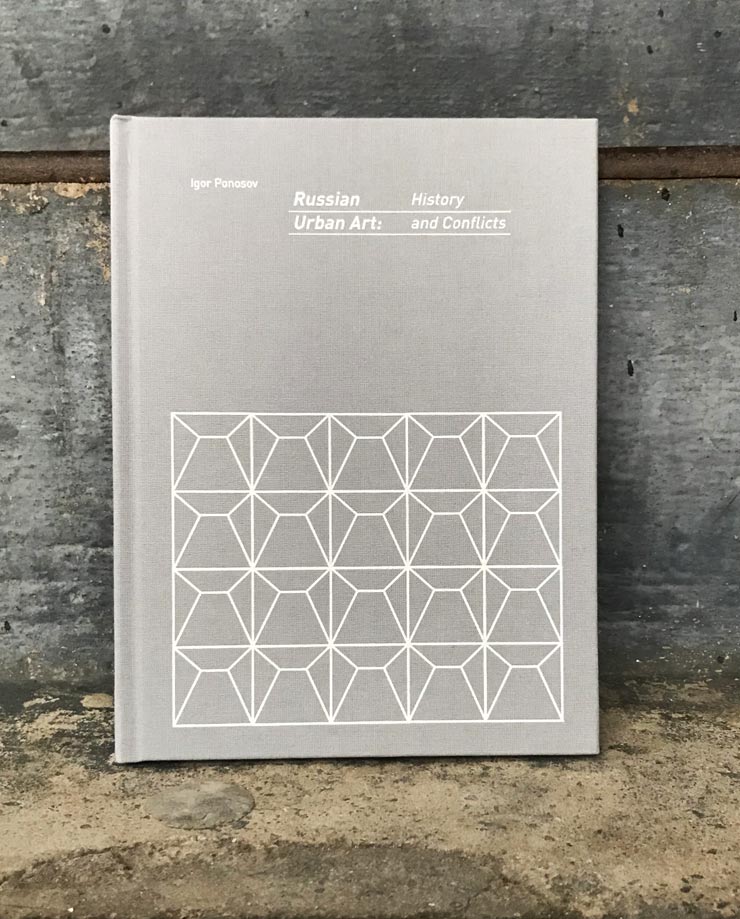An academically sourced opinion-based essay in book form that looks to art, social, economic, and geopolitical movements during the start of the 20th century to better understand the evolution of Urban Art in post-Soviet Russia, Igor Ponosov delivers a welcome reconstruction of the timeline and movements that bring urban art to this day.
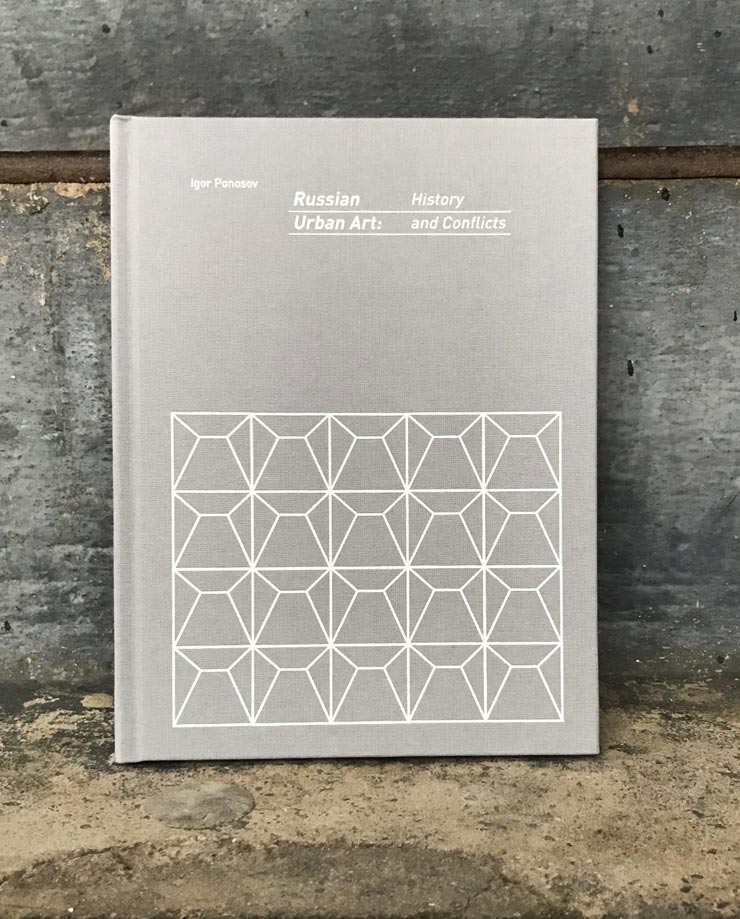
With the renewed interest in public art and muralism that has erupted over the last decade in many so-called Western cities it is good to learn how the public space in Russia has been catalyzed not-only by Hip Hop and new graffiti forms from Europe but also the history of Avant-garde art movements and Soviet Muralism in Russian Urban Art: History and Conflicts.
With a thorough yet brief recap of a dozen decades of art/social movements, Ponosov illustrates that it is a slowly but widely fluctuating wave of events and sentiments and social-political upheaval that brings art to the street over a century; during times of relative liberalism in artistic freedom during the Tsarists one century ago contrasted a short time later with abolishment of political expression of the Stalinist era that heralded state power and monumentalism, suprematists, and propagandizing the public. Interestingly it’s the constructivist and the realism aesthetics that are currently being repurposed for much of the colorful commercial and state-funded muralism that is happening today on massive Moscow and St. Petersburg walls, and Ponosov helps to illustrate, if not disentangle, the movements that co-evolve over the previous century.

It may prove fascinating to graffiti writers and Street Artists to learn the trajectory and timing of the arrival of Hip Hop culture in the USSR and how it proved itself an enthusiastic student to what was originally an organically occurring series of artistic practices within a mix of communities. The “expansion of Western culture” into post Soviet Russia, as he describes it, occurs a decade (or more) after the original birth of hip hop, yet the importation retains many of the same art practices and ethos during the cultural translation.
The evolution of Street Art on the scene may have been quicker due to immediate digital communications and because of the new practices having similarity to pre-existing mural and fine art practices in Russian cultural history as well as global graffiti ‘jams’. Similarly, the rise in international ‘street art’ festivals looks like it has influenced events here as well as the co-opting/ cultivating of non-political eye-candy murals for commercial and gentrification goals.
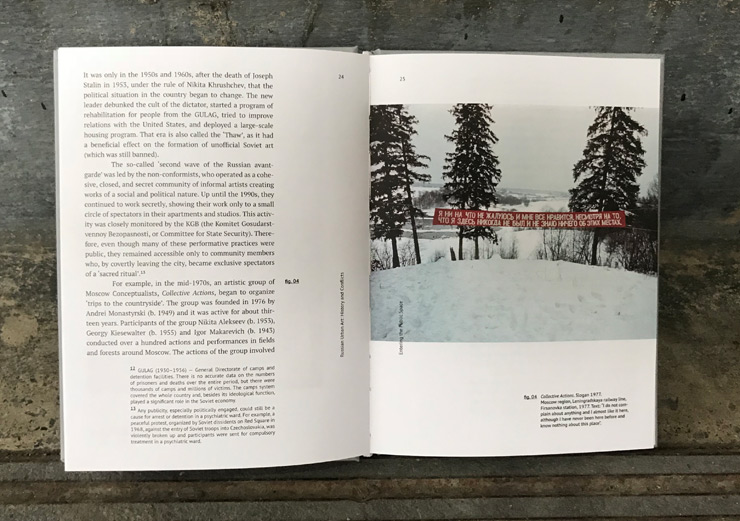
It’s enlightening to learn about the rise of something called ‘Actioning’ that recalls the Situationists, and urban performance as part of the thawing post Cold War Glasnost approach to public space. Equally riveting are Posonov’s observations and interest in the more modern, less flashy conceptual street practices and the diverse nature of expressions that defy classification in typical Street Art terms that he describes as a “Partizaning” – a phenomenon of socially engaged street art.
“The tactics and numerous actions of the activists of the Partizaning movement, organized over the course of several years, reflects the ideals of collectivism, metal assistance and responsibility,” he writes of a practice that defies the commonly held assumptions of Urban Art as being antisocial and purely vandalism. “They are intended to restore citizens’ faith that global changes are possible even when working on a local level – be it a staircase, a yard or a neighborhood – through the discourse of urban planning.”
Densely compiled, amply illustrated, and providing an endless series of sparks for future fires, Mr. Posonov makes the discussion open and easy to access, adroitly staying free of corrupting jargon or self-important Art-speak that proves empty. Consider it a concise, reliable eye-opening primer that you can reference into the future to appreciate the evolution of Urban Art in Russia.

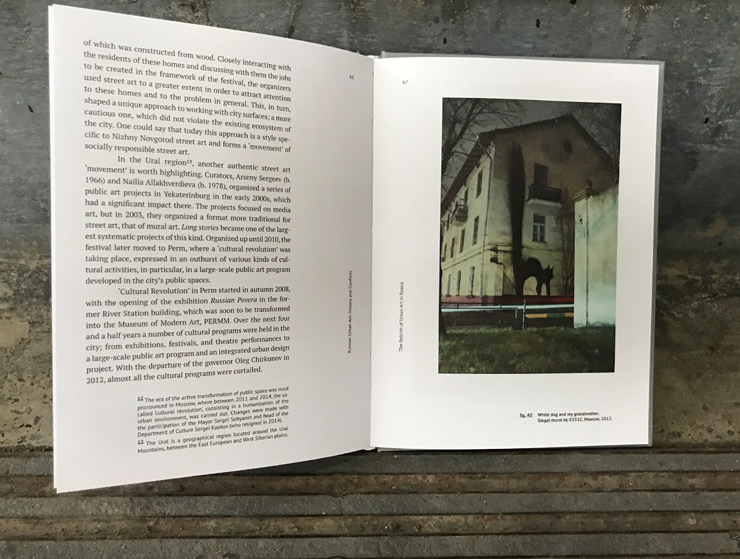
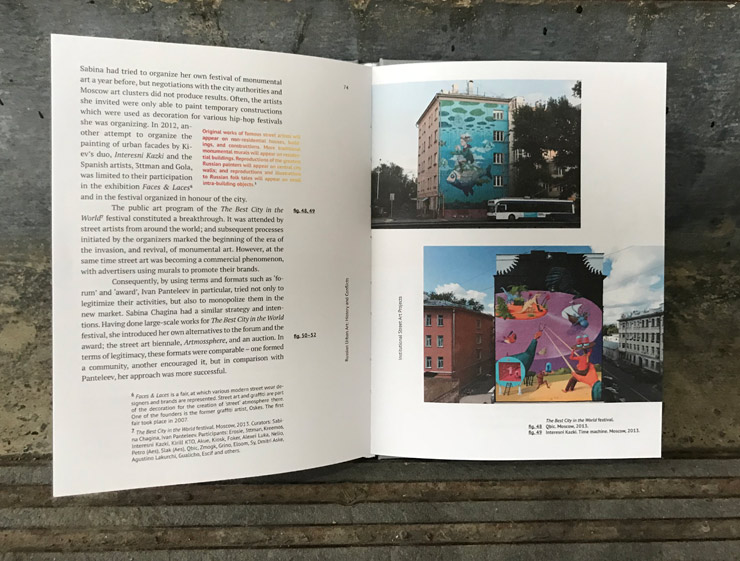
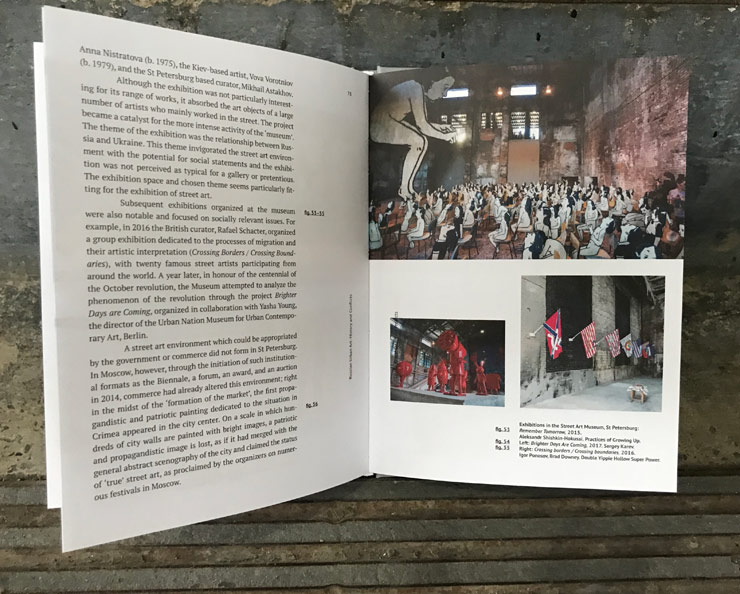
Igor Ponosov. Russian Urban Art: History And Conflicts. Moscow 2018. Published in collaboration with Street Art Museum, St Petersburg, Russia.
Other Articles You May Like from BSA:
Berlin is slaughtered with Street Art, graffiti, stickers. It appears in so many areas and neighborhoods that you feel like you are being spoken to by artists everywhere you go, not just adverti...
Welcome to BSA Images of the Week! "Ramadan Kareem" to everyone celebrating it this month. Also in April the Jews will be celebrating Passover and the Christians will be celebrating Easter and...
This week BSA is in Mexico City in collaboration with Urban Nation Museum of Urban Contemporary Art (UN) to see what is steering the scene on the street, meet artists, visit artist compounds, muse...
OverUnder and NDA took a trip to CDMX over the weekend and say they “hit the ground running”. The street artists/muralists have been running the streets of various cities over the last 10-15(?) years...
When it comes to street art, both legal and illegal placement is key – as is utilizing the stage to maximize impact. Decommissioned fire box alarms are historic reminders of an earlier New York, oddly...
 BROOKLYN STREET ART LOVES YOU MORE EVERY DAY
BROOKLYN STREET ART LOVES YOU MORE EVERY DAY